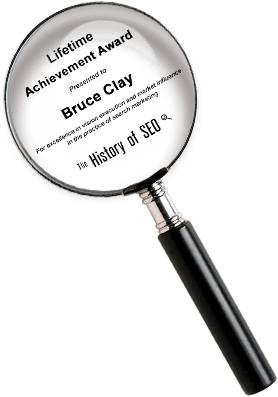How do I get buy-in for SEO beyond the marketing team?

- Overview
- What I Think
- Deep Dive: Make SEO Operational Across Teams
- 24-Step Action Plan
- Quick Solutions
- About Us
Overview
SEO becomes successful when it’s treated as an enterprise capability rather than just another marketing task. To get support from all departments — from product and engineering to IT, sales and the C-suite — you have to show them how SEO turns into business outcomes. Your stakeholders will buy in when you remove friction from workflows and deliver quick, visible wins that matter to them.
In this guide, we’ll show you how to make SEO relevant, measurable and operational across the organization.
What I Think
I’ve seen too many SEO programs stall because they live in a silo. When SEO reports only circulate inside marketing, other teams don’t see the connection to revenue, retention, or product usage. On the other hand, the teams that win incorporate SEO into existing processes like product roadmaps, release schedules, content briefs and sales enablement.
The most effective way to get the entire company on board with SEO is to shift your language. Instead of talking about search rankings, start talking about the things that truly resonate — leads, conversions, page performance and time-to-value. I’ve found that when you show metrics that the CFO, head of product, or VP of sales already care about, resistance melts and collaboration follows. It’s less persuasion and more translation.
Deep Dive: Make SEO Operational Across Teams
Start by mapping how each department touches discoverability and value. Product owners control features and landing pages; dev teams control performance and schema; sales cares about lead quality; support wants lower ticket volume.
Document these intersections with concrete examples. For instance: “A 5% page-speed improvement on Product pages → X% uplift in sign-ups” or “Better FAQ markup → fewer support tickets.”
Create a common dashboard that surfaces SEO signals alongside business KPIs. I recommend integrating organic conversions, assisted revenue, page-level engagement and support-ticket reductions into whatever BI tools leadership already uses. When SEO appears on the same scorecard as sales and product metrics, it stops looking like a vanity project.
Build a short list of rapid wins for each function — technical fixes for dev, conversion copy tests for product, resource pages for support and keyword-aligned collateral for sales. Run small, measurable experiments and report outcomes in business terms. Celebrate the wins publicly and document the playbooks so teams can repeat them.
Finally, institutionalize SEO with governance. Host training for content creators, an SEO QA step in release checklists, a single source of truth for structured data and a cross-functional steering group that meets monthly. The goal is to make SEO operational, not an extra task someone has to chase.
24-Step Action Plan
- Inventory all teams that touch web content and discoverability
- Map the specific SEO dependencies per team (dev, product, sales, support, legal)
- Translate SEO outcomes into business metrics each stakeholder cares about
- Build a one-page executive brief linking SEO to revenue and retention
- Create a shared dashboard that combines SEO and business KPIs
- Identify three rapid technical wins (speed, redirects, schema)
- Identify three rapid content wins (FAQ, landing pages, comparisons)
- Run an A/B test tied to a clear conversion metric
- Present early results in a stakeholder forum within 30 days
- Recruit an SEO advocate inside engineering and product
- Add an SEO QA checklist to sprint and release processes
- Document standard schema templates and publishing rules
- Create a short training module for content authors and product managers
- Provide sales with keyword-aligned one-pagers and battle cards
- Build a simple support-reduction metric tied to improved help content
- Automate weekly reports of organic leads and assisted conversions
- Hold a monthly cross-functional review to prioritize SEO work
- Rotate credit for wins—acknowledge other teams publicly
- Get a formal commitment or establish service level agreements for implementing high-priority SEO fixes
- Maintain and prioritize a product management tool backlog
- Run quarterly “SEO hackathons” to fix backlog items fast
- Publish, archive and share case studies showing before and after impact
- Review KPIs quarterly and adjust the dashboard as necessary
- Provide ongoing training, refresher sessions and onboarding materials
Want to turn SEO into a company-wide growth engine for your business?
SEO works best when the entire company understands how it impacts all aspects of the business. We can help you educate everyone — from IT to the C-suite and beyond — on the value that SEO brings to the whole organization.
Quick Solutions
- How do I unify my marketing disciplines under a single operating system?
- How do I govern real-time AI SERP shifts without losing rankings?
- How do I align my content with micro-moment personalization triggers?
- How do I build content for voice, video and text AI surfaces at once?
- How do I diagnose visibility gaps in Gemini and AI Overviews?
- How do I prioritize content for AI snippet inclusion and funnel depth?
About Us
Here at Bruce Clay Inc., we build SEO programs that help teams translate search opportunities into product improvements, engineering priorities, sales enablement and measurable revenue. From hands-on audits and dashboards to cross-team training and governance playbooks, we embed SEO into your operations so the whole company, not just marketing, benefits.
26,000+ professionals, marketers and SEOs read the Bruce Clay Blog
Subscribe now for free to get:
- Expert SEO insights from the "Father of SEO."
- Proven SEO strategies to optimize website performance.
- SEO advice to earn more website traffic, higher search ranking and increased revenue.

Comments are closed








